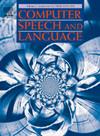Universal Speaker Embedding Free Target Speaker Extraction and Personal Voice Activity Detection
IF 3.4
3区 计算机科学
Q2 COMPUTER SCIENCE, ARTIFICIAL INTELLIGENCE
引用次数: 0
Abstract
Determining “who spoke what and when” remains challenging in real-world applications. In typical scenarios, Speaker Diarization (SD) is employed to address the problem of “who spoke when”, while Target Speaker Extraction (TSE) or Target Speaker Automatic Speech Recognition (TSASR) techniques are utilized to resolve the issue of “who spoke what”. Although some works have achieved promising results by combining SD and TSE systems, inconsistencies remain between SD and TSE regarding both output inconsistency and scenario mismatch. To address these limitations, we propose a Universal Speaker Embedding Free Target Speaker Extraction and Personal Voice Activity Detection (USEF-TP) model that jointly performs TSE and Personal Voice Activity Detection (PVAD). USEF-TP leverages frame-level features obtained through a cross-attention mechanism as speaker-related features instead of using speaker embeddings as in traditional approaches. Additionally, a multi-task learning algorithm with a scenario-aware differentiated loss function is applied to ensure robust performance across various levels of speaker overlap. The experimental results show that our proposed USEF-TP model achieves superior performance in TSE and PVAD tasks on the LibriMix and SparseLibriMix datasets. The results on the CALLHOME dataset demonstrate the competitive performance of our model on real recordings.
通用扬声器嵌入免费目标扬声器提取和个人语音活动检测
在实际应用中,确定“谁在何时说了什么”仍然具有挑战性。在典型场景中,使用Speaker Diarization (SD)来解决“谁在什么时候说话”的问题,而使用目标说话人提取(TSE)或目标说话人自动语音识别(TSASR)技术来解决“谁说了什么”的问题。虽然一些工作通过SD和TSE系统的结合取得了很好的结果,但SD和TSE之间在输出不一致和场景不匹配方面仍然存在不一致性。为了解决这些限制,我们提出了一种通用扬声器嵌入自由目标扬声器提取和个人语音活动检测(USEF-TP)模型,该模型联合执行TSE和个人语音活动检测(PVAD)。USEF-TP利用通过交叉注意机制获得的帧级特征作为说话人相关特征,而不是像传统方法那样使用说话人嵌入。此外,采用了一种具有场景感知差分损失函数的多任务学习算法,以确保在不同程度的说话人重叠中具有鲁棒性。实验结果表明,我们提出的USEF-TP模型在LibriMix和SparseLibriMix数据集上的TSE和PVAD任务中取得了优异的性能。在CALLHOME数据集上的结果证明了我们的模型在真实录音上的竞争性性能。
本文章由计算机程序翻译,如有差异,请以英文原文为准。
求助全文
约1分钟内获得全文
求助全文
来源期刊

Computer Speech and Language
工程技术-计算机:人工智能
CiteScore
11.30
自引率
4.70%
发文量
80
审稿时长
22.9 weeks
期刊介绍:
Computer Speech & Language publishes reports of original research related to the recognition, understanding, production, coding and mining of speech and language.
The speech and language sciences have a long history, but it is only relatively recently that large-scale implementation of and experimentation with complex models of speech and language processing has become feasible. Such research is often carried out somewhat separately by practitioners of artificial intelligence, computer science, electronic engineering, information retrieval, linguistics, phonetics, or psychology.
 求助内容:
求助内容: 应助结果提醒方式:
应助结果提醒方式:


